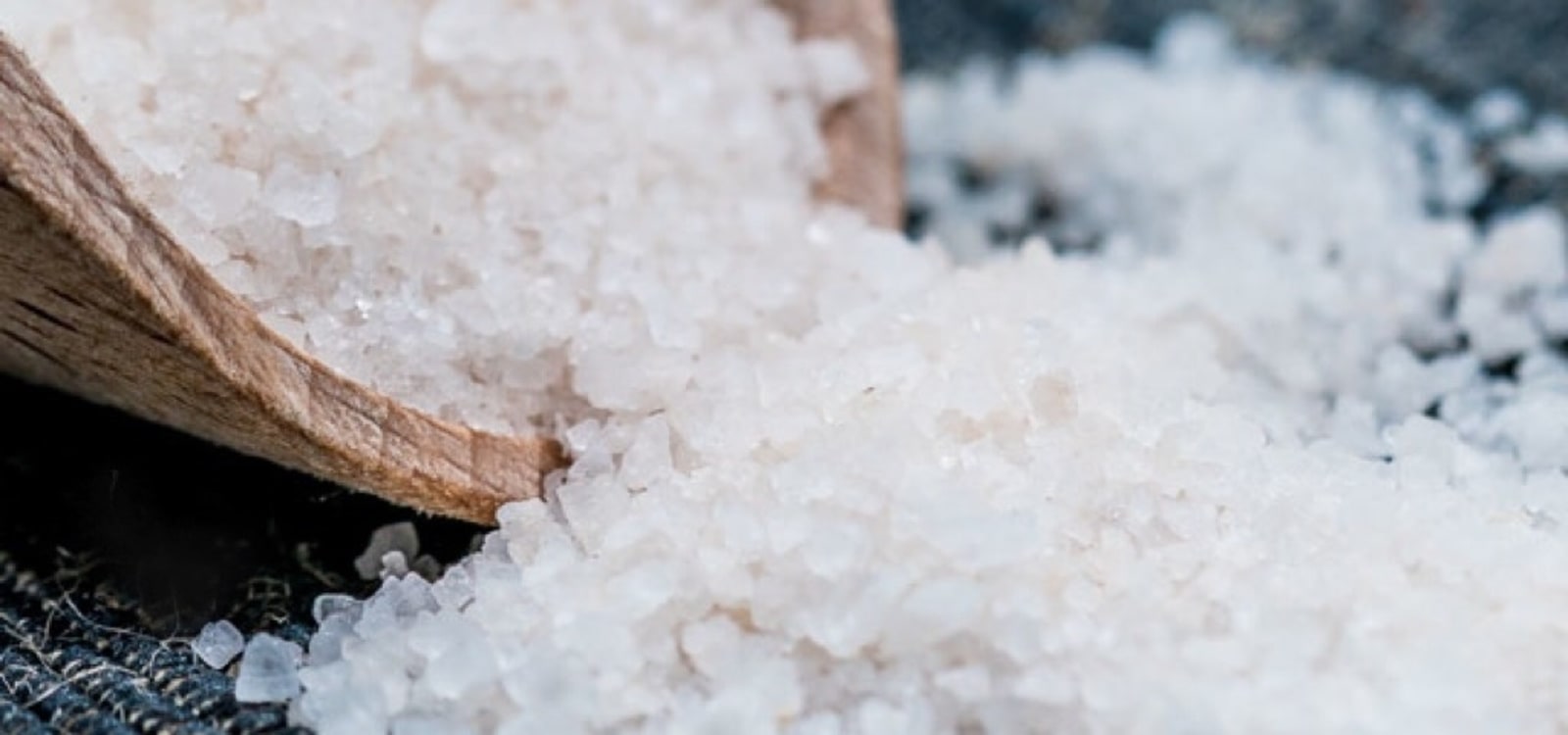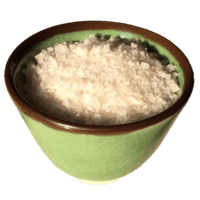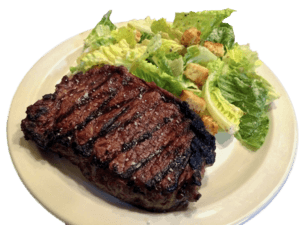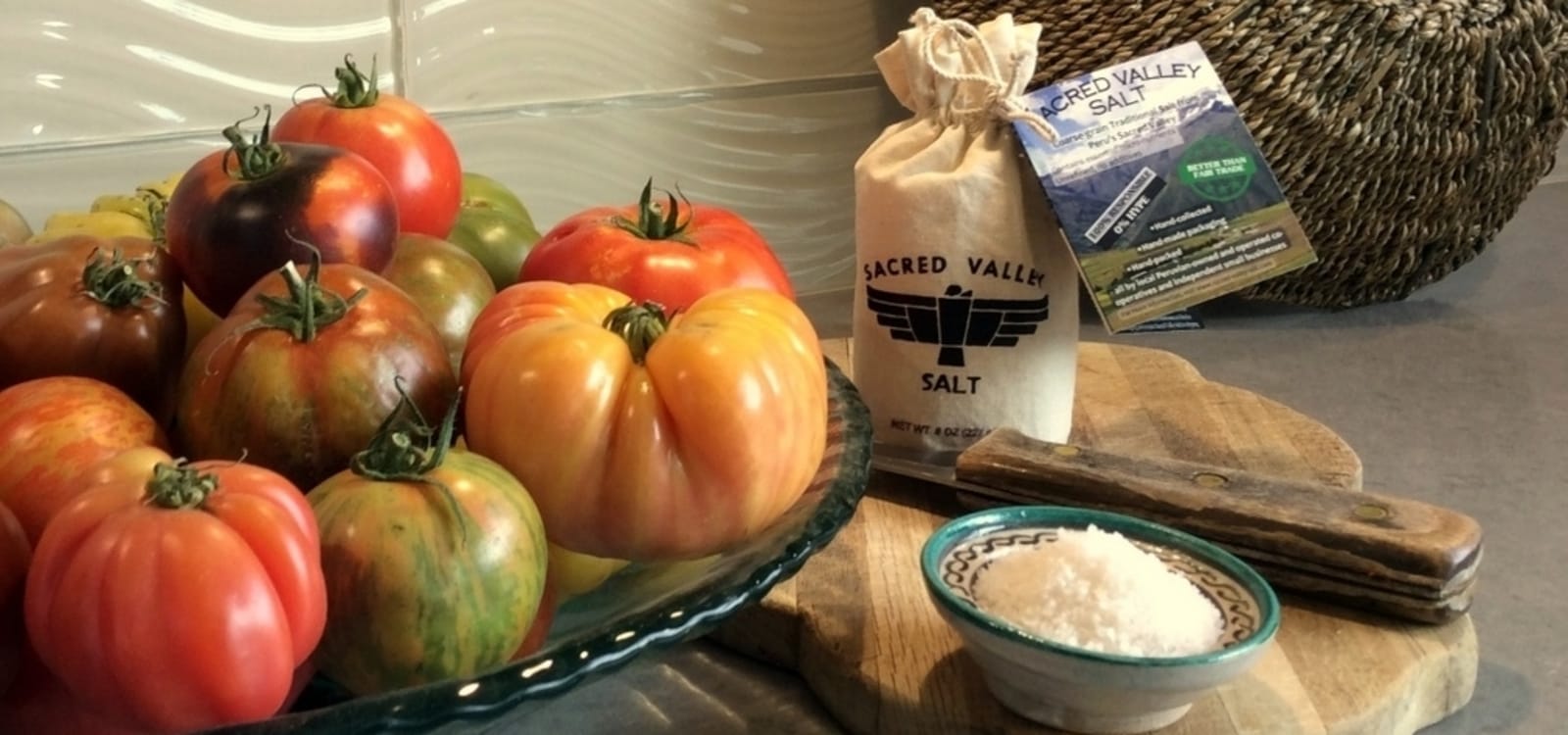Most finishing salts are about 98% sodium chloride. So what makes one finishing salt better than others?

The other 2%.
Flavor
Besides sodium chloride, unrefined, unprocessed salts often contain very small amounts of calcium, magnesium, potassium, and various sulfates. Additionally, depending on where the salt came from, a wide variety of other trace minerals or elements can be present. Thus, unrefined salts can be all sorts of different colors. (Sacred Valley Salt is usually a light amber, with some grains being almost white, and other being more tan-colored.) More importantly, the unique combinations of these "impurities" are what give a wide variety of distinguishable flavors to different salts.
Of course, flavor is subjective. But various individuals who try Sacred Valley Salt often use similar words to describe its flavor:
"Bright!"
"Vivid, but not too harsh."
"Sparkly. That's the best word I can come up with."
A somewhat more tangible aspect of the flavor that many also comment on are citrus notes.

Structure
The structure of a salt molecule is pretty simple - a tiny cube of predictable size. But salt grains (larger crystals made up of gazillions of salt molecules) have a lot of variety, and this makes a big difference when you eat them.
Grain size obviously makes a big difference. (Think coarse ground black pepper vs. fine ground black pepper.) Coarse-grain salts typically make for better finishing salts (the salt you sprinkle on finished food). Smaller grains generally dissolve more quickly, and are thus often preferred for cooking. The hardness of the individual grains is affected by impurities and moisture content.
Moisture content is very important.
For one thing, it helps salt stick to food rather than rolling off and forming a little pile on your plate underneath your food. Moister salts are better for meat, because they don't pull so much moisture out of the meat like drier salts do.
Sacred Valley Salt is a coarse-grain finishing salt. Being air and sun dried, the moisture content is fairly high. This, along with the other mineral impurities present, tempers the hardness of the crystals, resulting in a pleasant crunch and a tiny burst of flavor whenever they end up between your teeth.

International Recognition
Although salt from Maras has been used in Peru for close to a millennium, outside Peru, it's still a bit of a secret compared to other types of gourmet salt. It'll never become as common as, say, Himalayan Pink salt or fleur-de-sel/flor-de-sal, simply because the supply is limited. Himalayan pink salt comes from the second largest salt mine in the world, and fleur-de-sel comes from the sea.
The salt pools at Maras, on the other hand, can only make salt as fast as the sun can evaporate water from their limited area.
But even though the quantity will always be limited, salt from Maras is receiving more and more recognition for its high quality.
Chef Emilio Macías, of Mexico, received training in Europe and Japan, and today is known worldwide. He has held positions at Mugaritz in Spain, Santi Santamaria in Spain, and Astrid & Gaston in Peru, all of which are recognized among the 50 best restaurants in the world.
He now runs his own much acclaimed restaurant in Lima, Amoramar. Mr. Macías speaks highly of salt from Maras, stating that "Each grain of this salt has texture, flavor, and is excellent for salting dishes." (This is our best shot at translation from the original Spanish.)

Peruvian Chef Rafael Piqueras, interviewed here, has world renowned restaurants like Antica Osteria del Teatro (Italy) and El Bulli (Spain) on his resumé.
Having returned to Peru, he now has his own restaurant, which he named... Maras. And yes, he chose this name because of his high opinion of Maras Salt.
In the interview linked above, the interviewer asks,
"Any easy tips for cooking at home?
His reply:
"If you sprinkle Maras salt on a dish befor grilling, the flavors really come alive."


